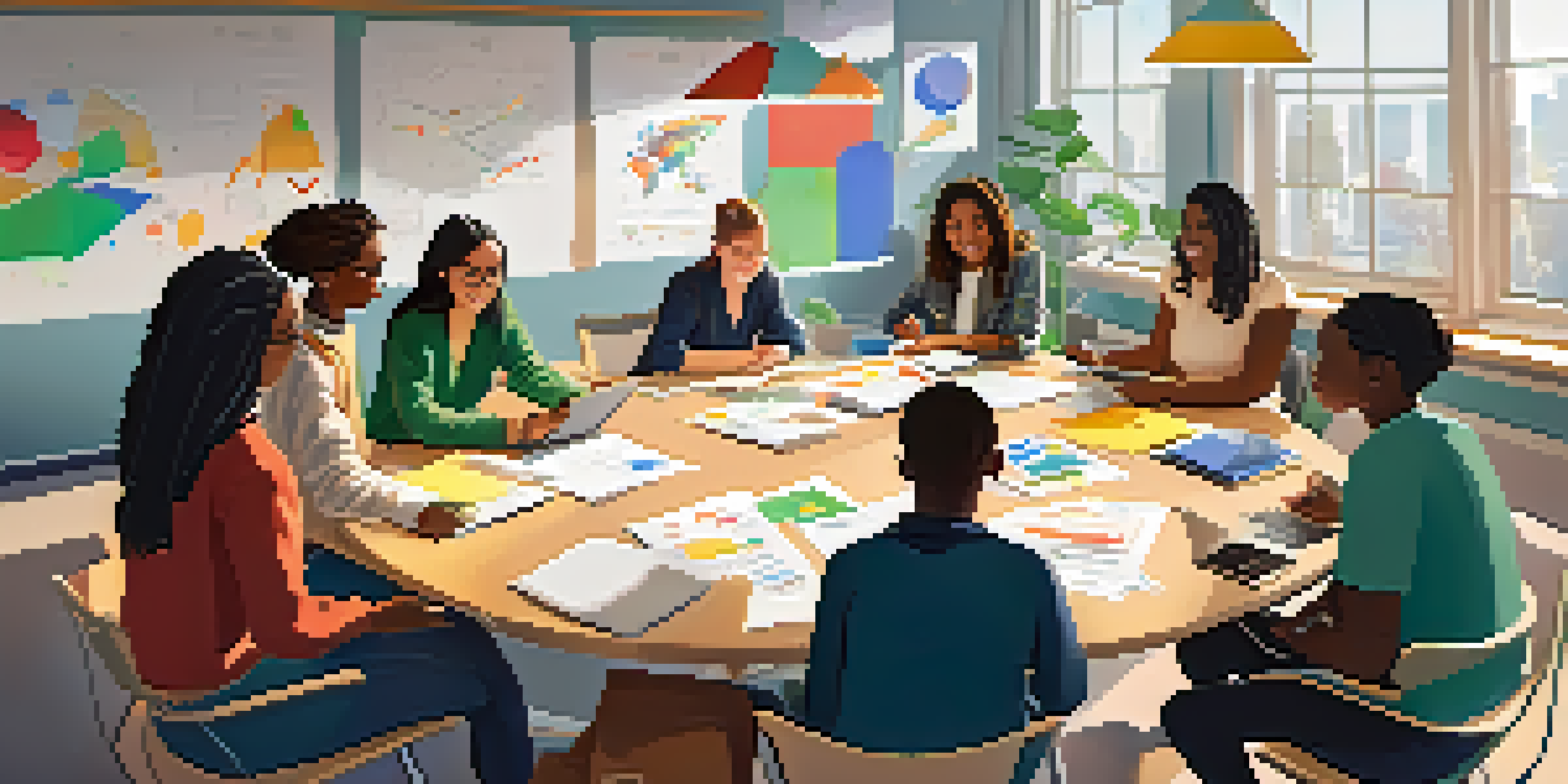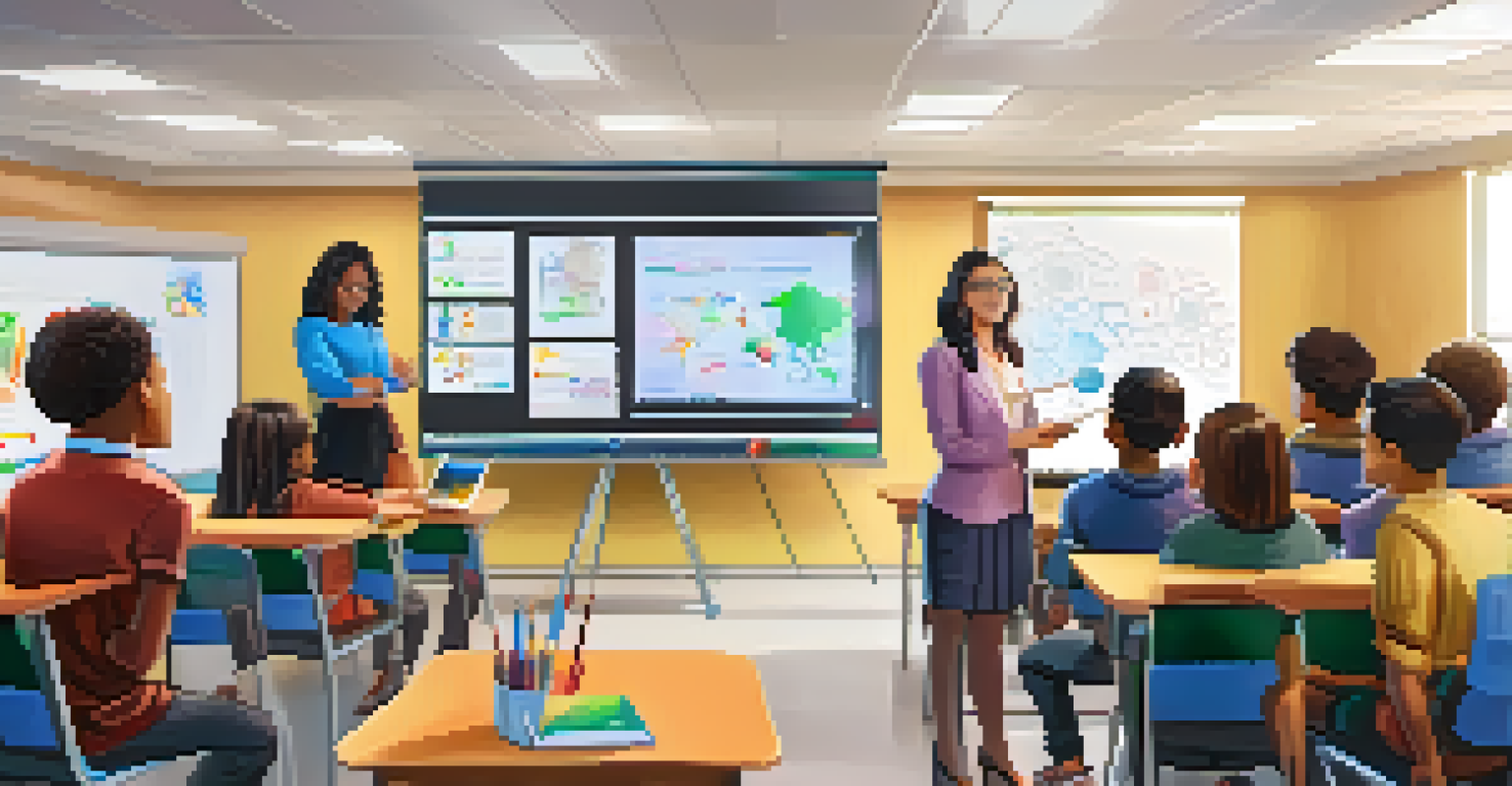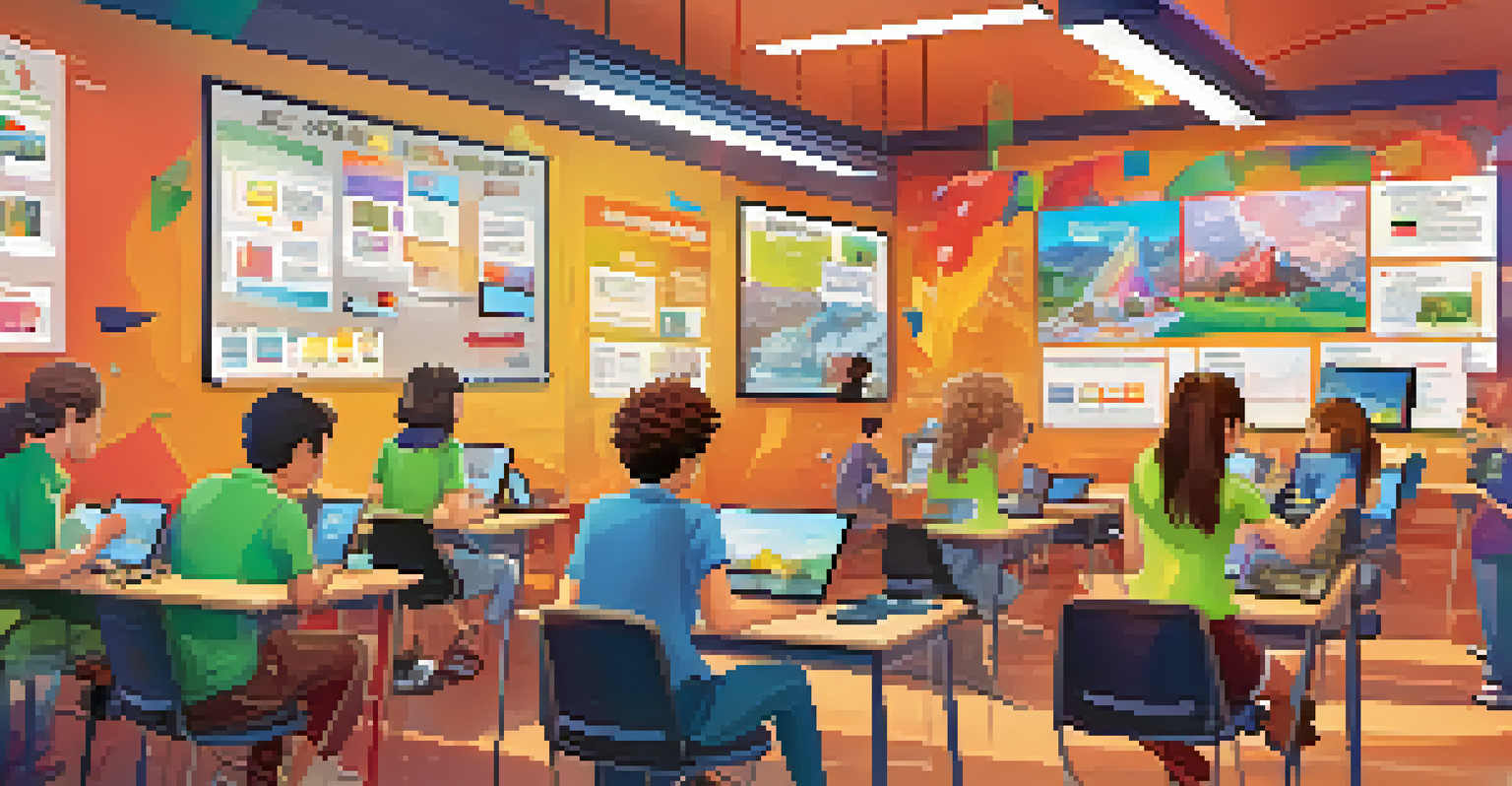Innovative Approaches to Group Projects in Blended Learning

Understanding Blended Learning and Group Projects
Blended learning combines traditional classroom methods with online tools, creating a versatile educational environment. Group projects in this setting leverage the strengths of both face-to-face interaction and digital collaboration. This hybrid approach not only fosters teamwork but also engages students in meaningful ways, enhancing their learning experience.
Collaboration allows teachers to capture each other's fund of knowledge. It’s a powerful way to share the work of teaching and to learn from each other.
In a blended learning environment, group projects allow students to work together across different platforms. This can include using discussion boards, collaborative documents, and video conferencing tools. By embracing these technologies, students can stay connected and share ideas, regardless of their physical location.
Moreover, group projects help develop essential skills such as communication, problem-solving, and adaptability. These skills are vital for success in both academic and professional settings. As students navigate challenges together, they learn to appreciate diverse perspectives and cultivate a sense of community.
Utilizing Technology for Effective Collaboration
Technology plays a crucial role in enhancing collaboration during group projects. Tools like Google Workspace, Trello, and Slack can streamline communication and task management among team members. By utilizing these platforms, students can easily share resources, set deadlines, and keep track of their progress.

For instance, Google Docs allows multiple users to edit a document simultaneously, making real-time collaboration seamless. This eliminates the barriers of time and space, enabling students to work together effectively, whether they are in the same room or miles apart. The instant feedback feature also encourages open communication and idea sharing.
Blended Learning Enhances Engagement
Blended learning combines traditional and online methods, fostering teamwork and meaningful student engagement.
Additionally, integrating multimedia tools like video presentations or podcasts can enrich the project outcomes. These formats not only engage students creatively but also cater to different learning styles. By embracing various technologies, educators can nurture a dynamic learning environment that fosters innovation.
Fostering Inclusivity in Group Projects
Inclusivity is essential in group projects to ensure every student feels valued and heard. By promoting diverse teams, educators can harness the unique strengths and perspectives of each member. This diversity not only enriches the learning experience but also prepares students for real-world collaboration.
The only way to do great work is to love what you do. If you haven't found it yet, keep looking. Don't settle.
To foster inclusivity, educators can implement strategies such as assigning roles based on individual strengths or interests. This approach ensures that all voices are represented and encourages active participation. Moreover, incorporating icebreaker activities can help build rapport among team members, creating a supportive atmosphere.
Furthermore, providing resources for students with different learning needs—such as audio recordings, visual aids, or extended timelines—can enhance their engagement and contribution. By cultivating an inclusive environment, educators empower all students to thrive and succeed in their group projects.
Encouraging Peer Feedback and Reflection
Peer feedback is a powerful tool in group projects, as it encourages students to engage critically with one another’s work. By providing structured opportunities for feedback, educators can help students develop their evaluative skills and foster a growth mindset. This process not only strengthens collaboration but also builds confidence and accountability.
For example, incorporating peer review sessions allows students to share constructive criticism and celebrate each other's achievements. This collaborative reflection enhances the overall quality of the project and encourages students to think critically about their contributions. Furthermore, it helps them learn to communicate feedback in a respectful and supportive manner.
Inclusivity Drives Group Success
Promoting inclusivity in group projects harnesses diverse perspectives and ensures all students feel valued.
Additionally, encouraging students to reflect on their group dynamics and individual roles can lead to greater self-awareness. By discussing what worked well and what could be improved, students can learn valuable lessons for future collaborations. This practice not only enhances their learning but also prepares them for teamwork in their future careers.
Setting Clear Expectations and Goals
Clear expectations and goals are essential for successful group projects. Educators should establish specific objectives that align with the project's learning outcomes. By doing so, students understand the purpose of their collaboration and can focus their efforts accordingly.
For instance, outlining roles, responsibilities, and deadlines at the project's outset can help prevent misunderstandings and conflicts. Regular check-ins can also ensure that all team members stay on track and feel supported throughout the process. This structure fosters a sense of accountability among students.
Moreover, setting measurable goals allows students to track their progress and celebrate milestones along the way. Recognizing achievements, no matter how small, can boost morale and motivation. By creating a clear roadmap, educators empower students to navigate their group projects with confidence.
Incorporating Gamification to Boost Engagement
Gamification can significantly enhance student engagement in group projects. By incorporating game-like elements such as points, badges, or leaderboards, educators can motivate students to participate actively. This playful approach can transform a traditional project into an exciting challenge.
For example, educators might create a point system where teams earn rewards for completing tasks efficiently or demonstrating creativity. This friendly competition fosters collaboration while encouraging students to strive for excellence. Additionally, it can make the learning process more enjoyable and less daunting.
Gamification Boosts Participation
Incorporating gamification into projects motivates students through game-like elements, enhancing their overall engagement.
Furthermore, gamification can also encourage risk-taking and experimentation. Students may feel more inclined to try new ideas or approaches when they know that their efforts will be recognized. By integrating gamification into group projects, educators can create a dynamic and stimulating learning environment.
Evaluating Group Project Success and Impact
Evaluating the success of group projects is crucial for understanding their impact on student learning. Educators should consider both the process and the product when assessing group work. This comprehensive evaluation can provide valuable insights into students' collaboration skills and knowledge acquisition.
One effective method is to use rubrics that outline specific criteria for evaluation. These rubrics can cover aspects such as teamwork, communication, creativity, and content quality. By providing clear criteria, educators enable students to understand expectations and strive for excellence.

Additionally, gathering feedback from students about their experiences can inform future project designs. Reflecting on what worked well or what challenges arose allows educators to make necessary adjustments. By continually evaluating and refining group projects, educators can enhance their effectiveness and better support student learning.